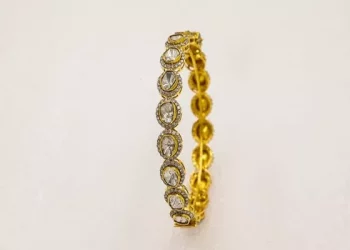“Plastic surgery” is an old topic, some people have plastic surgery to get a beautiful appearance, some people have plastic surgery to regain their confidence in life.
Unlike humans, vines are pruned, pruned and erected by winemakers, either to get sunlight or to keep germs at home……
What will become of these “plastic” vines?
Santorini, Greece, is a windy volcanic island in the Aegean Sea with strong sea breezes.
To protect the vines and their fruit from the strong sea breezes of the region, wine farmers trim the vines low and coil them in a shape similar to a basket, allowing the grapes to grow inside.
The Bush vine has a short trunk that allows new branches to grow up from the top of the trunk or spread around.
The vine shaped in this way resembles a wine cup, so this frame is also called a Gobelet.
The shrubby scaffold is popular in the hot, dry Mediterranean regions of France’s Languedoc, Cyprus and central Spain because it creates a leafy canopy that provides good shade and protects the grapes from the scorching sun.
Pergola is common in Italy, Argentina, and Spain, and is designed for use in hot, dry regions.
The branches of the vine grow along a tall trellis, producing grapes that hang high below the branches, protecting them from direct sunlight.
Smart-Dyson is widely used in wine producing countries such as the United States, Australia, Chile, Argentina, Spain and Portugal.
This kind of cultivation frame is to pull out the new branches from the short branches of the main vine in an upward and downward alternating way tied to the grape frame.
This creates a well-ventilated canopy that is less susceptible to bacteria and reduces the use of pesticides, so the Smart-Dixon style is also commonly used on organically grown vines.
A vine pruned in the Guyot style usually has one or two long branches, and each branch is fixed horizontally on the vine stand.
Among them, the pruning method that retained only one long branch was called Single Guyot, while the pruning method that retained two long branches was called Double Guyot.
This scaffolding is easy to maintain and limits the yield of the vine to improve the quality of the fruit.
Vertical Shoot Positioning (VSP) As the name suggests, the vertical shoot distribution is to tie the new branches of the vine to the grape rack in a vertical direction.
This way of shaping helps keep the canopy open, which not only allows the grapes to get more sunlight, but also creates a good ventilation environment to avoid the growth of fungi.
But in hot regions, growers will loosen the tops of new branches and let them fall naturally to create shade to protect the grapes from the sun.
In addition, this type of scaffolding fixes the grape branches at a certain height, which facilitates machine harvesting.
Geneva Double Curtain is to divide the new branch of the vine horizontally into two curtains and make it grow downward.
This arrangement cuts the dense canopy in half, reducing canopy density and increasing the amount of light the grapes receive.
Lyre by Romain Fritsch The Lyre is similar to the Geneva double curtain, in which the new branches of the vine are horizontally divided into two curtains.
The difference is that the new branches of the harp vine grow upward, like a harp.
This kind of cultivation frame has good ventilation and light transmittance, which can prevent mold from breeding.
A Taille Chablis, Henriette Bazan.
Wine growers in the Champagne region often use the Chablis style to prune Chardonnay vines.
Vines that are shaped in this way usually have three to FIVE main vines that have been growing for about 10 years, each WITH a long branch AT the top.
Because they retain more perennial wood, Chablis vines are better able to store carbohydrates and nitrogen, giving them an edge against climate change.
The different shapes and styles of the “facelifted” vines can adapt well to the local terroir and produce excellent fruit for winemakers to produce even more beautiful wines.
The latest market dynamics at any time to see, please pay attention to.












































